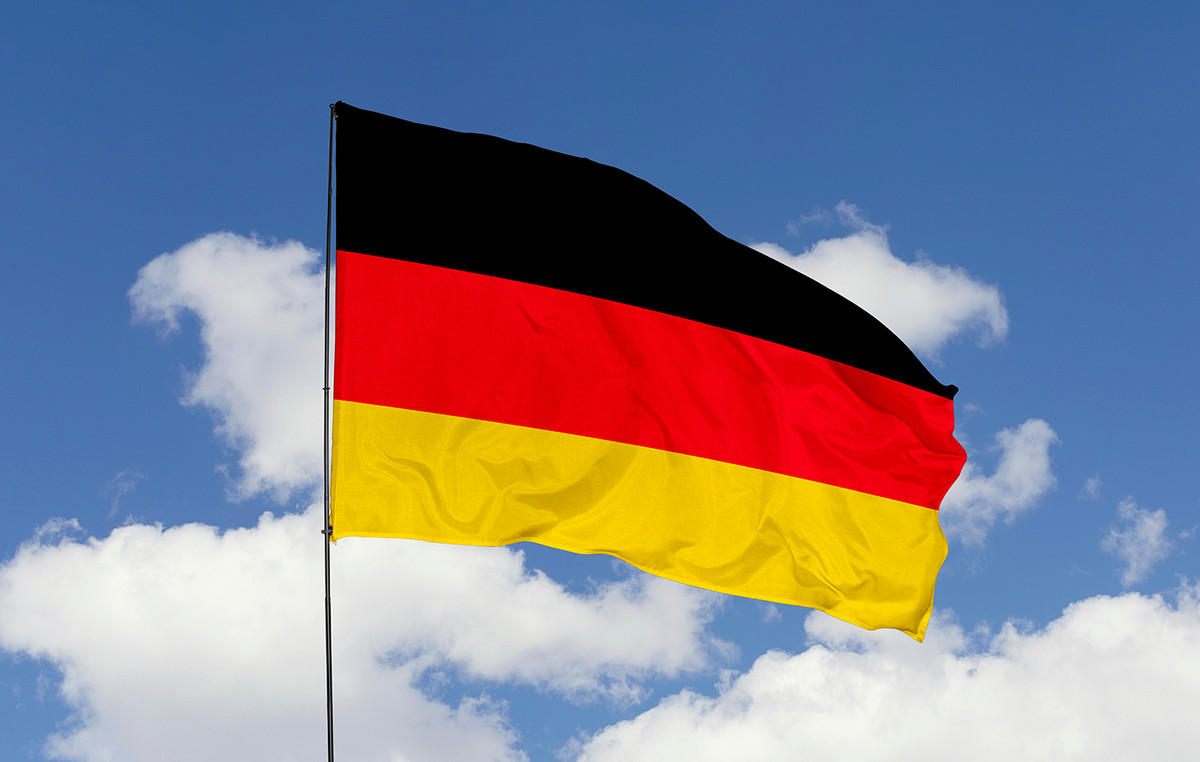After nearly two years of severe restrictions on the entry of foreigners, Argentina, Uruguay and Chile reopen, as of this Monday (1/11), the borders for international tourism.
Countries in the region with the toughest and most prolonged measures to prevent the entry of people from abroad since the spread of Covid-19 contagions in South America in 2020, these destinations now have, despite the reopening, air connectivity with Brazil well below pre-pandemic levels.
For the Brazilian José Ricardo Botelho, executive director and CEO of the Latin American and Caribbean Air Transport Association (Alta), there was a lack of balance and predictability in the definition of measures related to borders. “The decisions came out of the hands of the civil aviation authorities – a sensitive and extremely specialized sector, which needs predictability – and the infrastructure ministries, and were taken by health authorities. Often, during the pandemic, this balance between keeping it open and taking care of contagion ceased to exist, putting aviation on the ground,” he explains to CNN.
According to Alta, the forecast is that there will be a peak in demand for tickets in the first two weeks of opening, by people “who have urgent matters to attend to in other countries”, but the offer of frequencies is regulated according to the demand of the passengers, and availability should increase as the demand for flights increases.
Argentina
As of this Monday, Argentina, which a month ago opened its air borders to passengers from neighboring countries – including Brazil – with the complete vaccination scheme, will allow the entry of foreigners from anywhere in the world. In addition to immunization, travel insurance with coverage for Covid-19 and negative PCR performed within 72 hours prior to arrival is also required to enter. Covid tests on Argentinean territory and mandatory quarantine for unvaccinated children, mandatory until then, will no longer be required.
Those looking for tickets to the country today will find a good frequency of flights and better prices, when compared to the offer available a few weeks ago. “The situation is improving, but it is still not normal operation, with all the times before the pandemic”, he explains to CNN Felipe Baravalle, Executive Director of the Chamber of Airlines of Argentina. According to him, the country still maintains a time interval between flights that did not exist before the restrictions, preventing the number of landings that the country received before.
According to Baravalle, despite all countries having lost air connectivity, “in Argentina the closure of borders was longer and more permanent than in other countries, which had intermittent openings.” “We are still at a very delicate moment, with the market depressed”, he assesses, explaining that demand has increased, but the country will not reach the level before the pandemic in the short term.
Since the beginning of the pandemic, Argentina even suspended flights, including with Brazil, and established quotas for people who could enter the country daily, which has not happened since mid-October. In addition, the domestic demand for international tickets is affected, according to him, by taxes of more than 30% imposed by the government of Alberto Fernández, on purchases of airline tickets to other countries and purchases with a card abroad.
Brazilian tourists who want to visit the country have options from the state-owned Aerolíneas Argentinas, which has two daily flights between Buenos Aires and Guarulhos (SP) and three weekly flights from Galeão International Airport (RJ) to the Argentine capital. As of January, flights between Rio and Buenos Aires will be daily. Much higher than the availability that existed just over a month ago, the offer is still far from when the state-owned company operated 3 to 4 daily flights to São Paulo and 2 to 3 to Rio de Janeiro, before the pandemic.
In January 2022, the Argentine state company will also resume flights between Rio de Janeiro and the Argentine city of Cordoba, but is still analyzing when it will reactivate flights between Buenos Aires and Florianópolis, Salvador, Porto Alegre and Curitiba.
Latam Airlines will have 24 and 26 weekly flights in November and December, respectively, from Guarulhos to Buenos Aires, when this number reached 35 two years ago. The frequency between São Paulo airport and Mendoza, however, has returned to the 2019 level , with 3 weekly flights by the company.
The bad news for tourists from other Brazilian states is that the weekly departures from Rio de Janeiro, Salvador and Recife to Buenos Aires will not be resumed by the company for the time being.
Gol, in turn, will only restart operations for Argentina on December 19th. The airline’s weekly flights to Argentina will go to Aeroparque Jorge Newbery, in Buenos Aires, with a daily flight from Guarulhos (SP), one from Galeão (RJ), and two weekly flights from Florianópolis (SC). In all, there will be 16 weekly flights departing from 3 Brazilian cities towards the neighboring country, when in 2019 there were 76 flights from Brazil to Argentina, departing from 10 cities.
With a smaller percentage of the market between Argentina and Brazil, Turkish Airlines, British Airways, Ethiopian and Flybondy will also have some frequencies. Azul, on the other hand, does not yet have plans to resume operations in Argentina.
Uruguay
An example of advances in vaccination alongside Chile, both with more than 75% of the population with the full immunization scheme, Uruguay even banned the entry of Uruguayans into its territory at the end of last year to prevent the spread of new ones mutations and aggravation of contagions. Despite alleviating some measures, so far the country had only allowed the entry of non-resident foreigners who owned property in the country.
From this Monday, the country will allow the entry of any international tourist with the complete vaccination schedule, provided that the immunization deadline is met and that it has been received in the 9 months prior to the trip. To visit the neighboring country, it will be necessary to show a negative PCR performed in the 72 hours prior to the flight. Minors without full immunization will need to undergo a new test seven days after the first one or do quarantine after disembarking.
In a show that will enter the dispute to attract tourists at the reopening, Uruguayan authorities announced that the country should offer a booster dose of the vaccine to foreigners who stay at least 5 days in the country. Until this Sunday (31/10), however, the measure had not yet been regulated and it is expected that an ordinance with the details of this application is published during the week.
For Carlos Pera, president of the Uruguayan Association of Travel Agencies, the high percentage of the Uruguayan population with three doses of the covid-19 vaccine makes the country a “sanitary safe” destination for visitors, and “connectivity is starting to become update”. “As demand grows, the supply of air seats will also increase,” he says, noting that Brazil is the “number one” vacation destination for Uruguayans, which also contributes to demand.
For November, in particular, the demand for tickets is already very high, due to the qualifiers for the World Cup in Qatar, between Uruguay and Argentina, on 11/12, the South American Cup final between Athletico Paranaense and Bragantino, on 20 /11, and the Copa Libertadores, between Palmeiras and Flamengo, on 11/27. All matches will be in Montevideo.
“There is a brutal demand, mainly from the Brazilian side. It’s crazy how many people will come to Uruguay on these dates. In fact, there are already a large number of charter flights [programados]”, emphasizes Pera.
In addition to the land route, Brazilian tourists will have Gol flights starting next Wednesday (3), with 4 weekly flights from Guarulhos to Montevideo, which from 11/15 will be daily – maintaining 11 weekly flights to less than in the pre-pandemic period.
Latam, on the other hand, will have 7 weekly flights to the Uruguayan capital, but there is still no forecast to resume routes between Rio de Janeiro and Montevideo and São Paulo and Punta del Este, with 12 fewer weekly flights from Brazil to Uruguay compared to to 2019.
Azul, in turn, will have, from November 10th, 4 weekly flights from Porto Alegre to Montevideo, a city to which it will make extra flights due to the demand generated by the sporting events. As of December 20, flights between Rio Grande do Sul and Montevideo will be daily. On this date, the company will also activate the route between Porto Alegre and Punta del Este, with 4 weekly frequencies, which will be maintained until the end of January.
The Uruguayan resort will also be connected by air to Campinas, with Azul flights with Viracopos twice a week between December 23 and the end of January.
Chile
This Monday, Chile eliminates the need for a 5-day quarantine for passengers coming from abroad. As of today, isolation in the hotel will only be mandatory in the hours of waiting for the result of the PCR performed on arrival at the airport in Santiago. It is estimated that this delay can be from 4 to 20 hours.
But to travel to the country, it is necessary to plan ahead: in addition to the negative PCR performed no more than 72 hours before the trip, the Chilean government requires a validation of the tourist’s vaccination scheme, made on an official website, and this confirmation it can take about a month. Foreigners will also need to have travel insurance with a minimum coverage of $30,000 during their stay in the country.
For Cristóbal Lea-Plaza, secretary general of the Chilean Airlines Association, the five-day quarantine inhibited the arrival of tourists, whose average stay is 6 to 8 days. After relief from the end of the requirement, airlines are now asking for a less bureaucratic approval of the vaccine, to facilitate the arrival of foreigners.
In addition, the country also faces a decrease in air connectivity due to the restrictions of the pandemic period. Among the measures taken by the government of Sebastián Piñera to contain the contagion was the ban on Chileans leaving the country without authorization. According to Lea-Plaza, with the difficulties of leaving the country, domestic connectivity only recovered its pre-pandemic levels due to the increase in internal tourism.
Now, the challenge is to return to international frequencies from before the pandemic. “As the government released the restrictions, passenger demand increased and the response was good. However, demand and frequencies are still far from the levels before the pandemic”, he explains.
According to the Chilean representative of the sector, however, the availability of air seats is increasing, routes are being resumed and some are even emerging. “The recovery of international traffic is slower than the domestic one, but we believe that by the end of next year it will be possible to reach pre-pandemic offer levels”, he bets.
To arrive in the country in November, Brazilians have the option of flights between Foz do Iguaçu and Santiago operated by Jetsmart and flights from Rio de Janeiro and São Paulo to the Chilean capital by Sky Airline, which will incorporate routes to Florianópolis in December.
Latam will have 14 and 18 weekly flights in November and December, respectively, between São Paulo and Santiago (before the pandemic there were more than 50 flights per week). As of this Monday, the company resumes, with 3 weekly flights in November and 4 in December, flights between Galeão and Santiago, which before the restrictions were 18 per week.
There is still no forecast for the resumption of Latam routes between Brasília, Florianópolis and Porto Alegre with Santiago. Gol, in turn, still does not say when or if it will resume its operations with Chile this year.
Reference: CNN Brasil
I am Sophia william, author of World Stock Market. I have a degree in journalism from the University of Missouri and I have worked as a reporter for several news websites. I have a passion for writing and informing people about the latest news and events happening in the world. I strive to be accurate and unbiased in my reporting, and I hope to provide readers with valuable information that they can use to make informed decisions.







